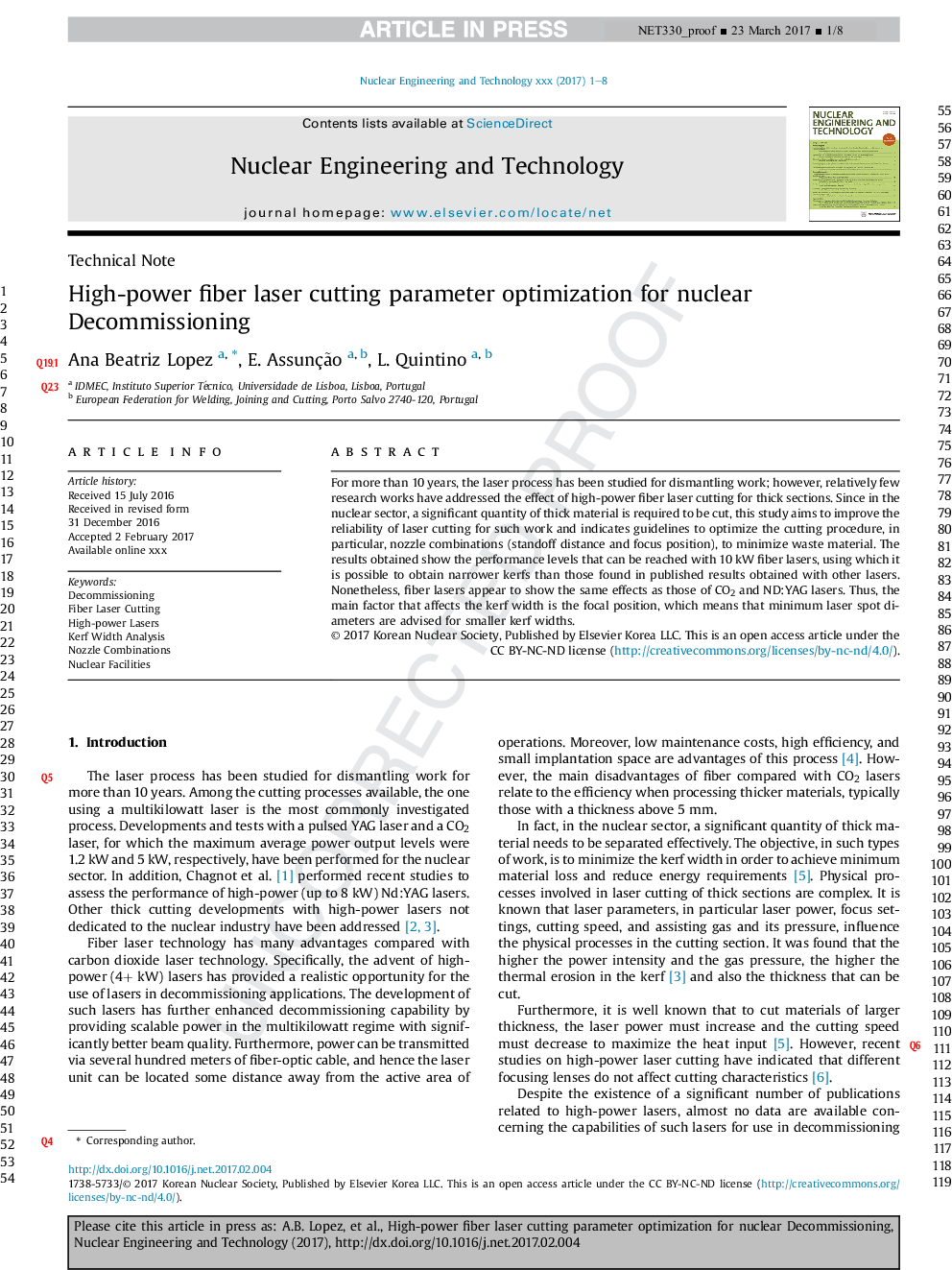| Article ID | Journal | Published Year | Pages | File Type |
|---|---|---|---|---|
| 5477967 | Nuclear Engineering and Technology | 2017 | 8 Pages |
Abstract
For more than 10 years, the laser process has been studied for dismantling work; however, relatively few research works have addressed the effect of high-power fiber laser cutting for thick sections. Since in the nuclear sector, a significant quantity of thick material is required to be cut, this study aims to improve the reliability of laser cutting for such work and indicates guidelines to optimize the cutting procedure, in particular, nozzle combinations (standoff distance and focus position), to minimize waste material. The results obtained show the performance levels that can be reached with 10Â kW fiber lasers, using which it is possible to obtain narrower kerfs than those found in published results obtained with other lasers. Nonetheless, fiber lasers appear to show the same effects as those of CO2 and ND:YAG lasers. Thus, the main factor that affects the kerf width is the focal position, which means that minimum laser spot diameters are advised for smaller kerf widths.
Related Topics
Physical Sciences and Engineering
Energy
Nuclear Energy and Engineering
Authors
Ana Beatriz Lopez, Eurico Assunção, Luisa Quintino, Jonathan Blackburn, Ali Khan,
